How To Photograph Sunsets Camera Settings
Sunset Photography – Perfect Exposures Every Time
Sunset Photography is hard to get right. Y'all see a fantastic orange sunset, you lot accept the picture and the sky is too vivid or the ground is besides night. This is a very common scenario so how exercise the pros get perfect exposures in their sunset photos? Well, hither I'm going to answer that question and give you 4 great tips to ensure yous exposure correctly for perfect sunset photography, every fourth dimension.
Control your photography and exist much more creative with it in our online courses. Click below for more than details.
Why is it hard to expose correctly for sunsets?
Exposure in photography is the effulgence or darkness of the image. You see a lovely scene, photograph it, and the sky is also bright, or the foreground is too night. The showtime matter to annotation here is that this happens to anybody, whether you've got lots of experience or the best camera in the world, this will happen. And the reason for this is simple, the sky is a lot brighter than the ground. In general, it will be around 2 stops brighter.

Dusk photo exposed correctly for the sky / Camera Settings: xvi mm Focal Length - 1/12 Seconds - f/sixteen - ISO 100

Sunset photograph exposed correctly for the ground / Camera Settings: 16 mm Focal Length - 0.four 2nd - f/xvi - ISO 100
When you look at a scene, your eye focuses on one part at a time. If y'all look at the sky, you volition see particular and it will wait correct, if you lot motion your eyes down to look at the ground, the aforementioned will happen, your optics volition adjust so you tin can see what you lot are looking at.
The photographic camera does not work like that. The camera is trying to see the whole landscape at once, which includes the ground and the sky. This means it physically cannot betrayal accurately for both every bit the heaven is and then much brighter than the ground.
This is where the dilemma lies, so how practise y'all combat this?
To get correct exposures for sunset photography y'all accept to residuum out the scene's brightness vs its darkness, or what's called the image'south 'luminosity'. As with near photography, in that location's no 1 answer to this so below are all my tips.
Tip 1- Employ Graduated ND Filters
Virtually photographers would hold that getting a photo right in photographic camera is the best thing to practise wherever possible. Using graduating (grad) ND filters is one way of doing this and the more traditional way of balancing a scene'due south exposure.
An ND filter acts like sunglasses would to your eyes, it blocks low-cal coming into the lens like sunglasses blocks light coming into your eyes. ND stands for Neutral Density which means it blocks the calorie-free in a neutral way without changing the colour of the calorie-free. A Grad ND filter darkens the scene gradually from the acme to the lesser and is used to darken skies.

Photographer setting upward for sunset photography using a ND grad Filter
Using grad filters involves putting a filter in forepart of the lens to darken the sky without affecting the foreground. This is done using a filter holder that attaches to the front of the lens. These filters come up in different strengths which y'all can apply depending on the brightness of the heaven. East.g. yous can utilise a iii stop ND grad for a very bright sky and a 1 terminate grad for a slightly bright sky. An ND hard grad filter has a hard line downwards the middle and is used for scenes with a difficult horizon line, eastward.g. a seascape. A soft grad filter is graduated betwixt calorie-free and dark and is used for scenes with an uneven edge betwixt the heaven and the basis eastward.g. a scene with trees. By using Grad ND filters, you are concealment the heaven in shot therefore balancing the exposure of the sky confronting the basis.
ND Filters – An in-depth Guide
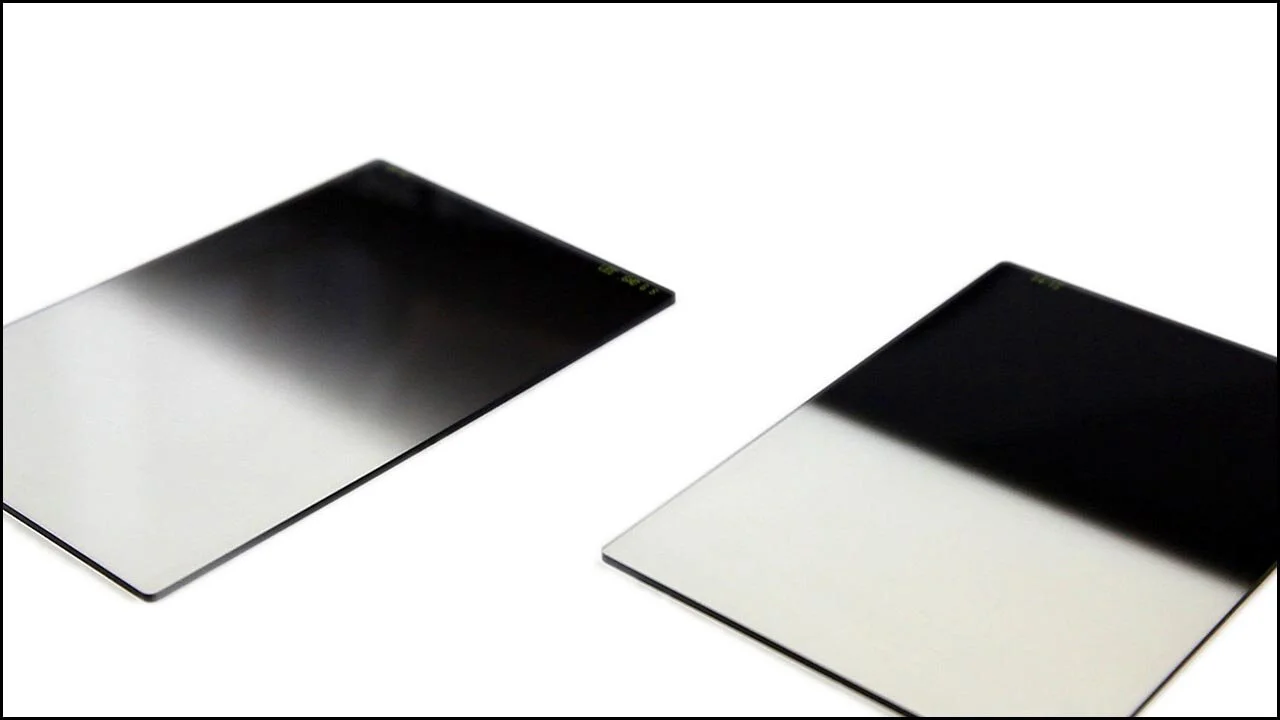
On the left is a Soft Grad Filter and on the right is a Difficult Grad Filter.
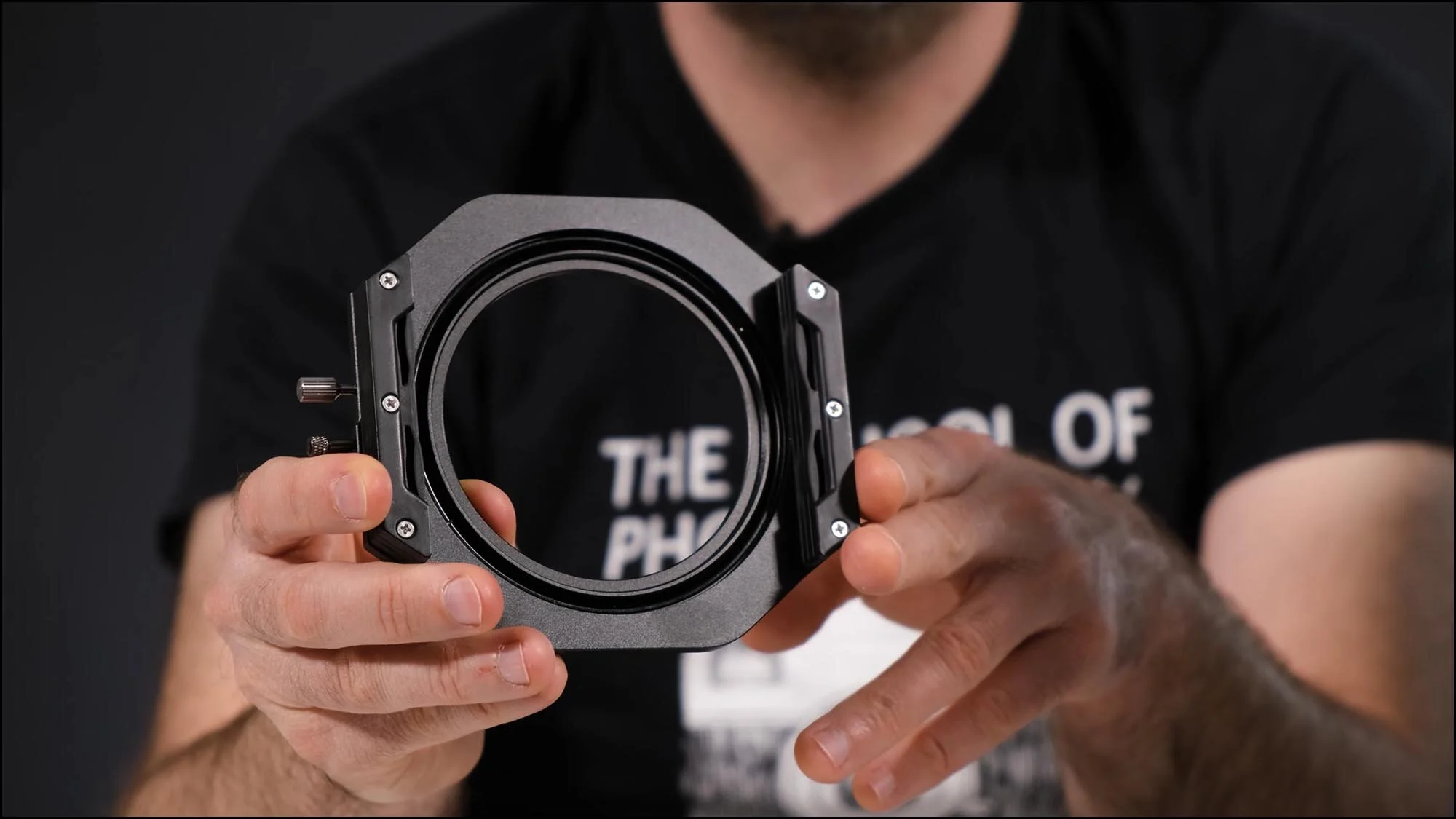
Filter holder – This attaches to the front end of your lens.
There are cons to using grad filters and that is that if you take a horizon line with copse or mountains etc., fifty-fifty with a soft grad information technology will darken downward the tops of trees and mountains in a way you lot may non like.
Example of using Grad Filters

Photo exposed correctly for the footing / Camera Settings: 17 mm Focal Length - i/60th Second - f/11 - ISO 100
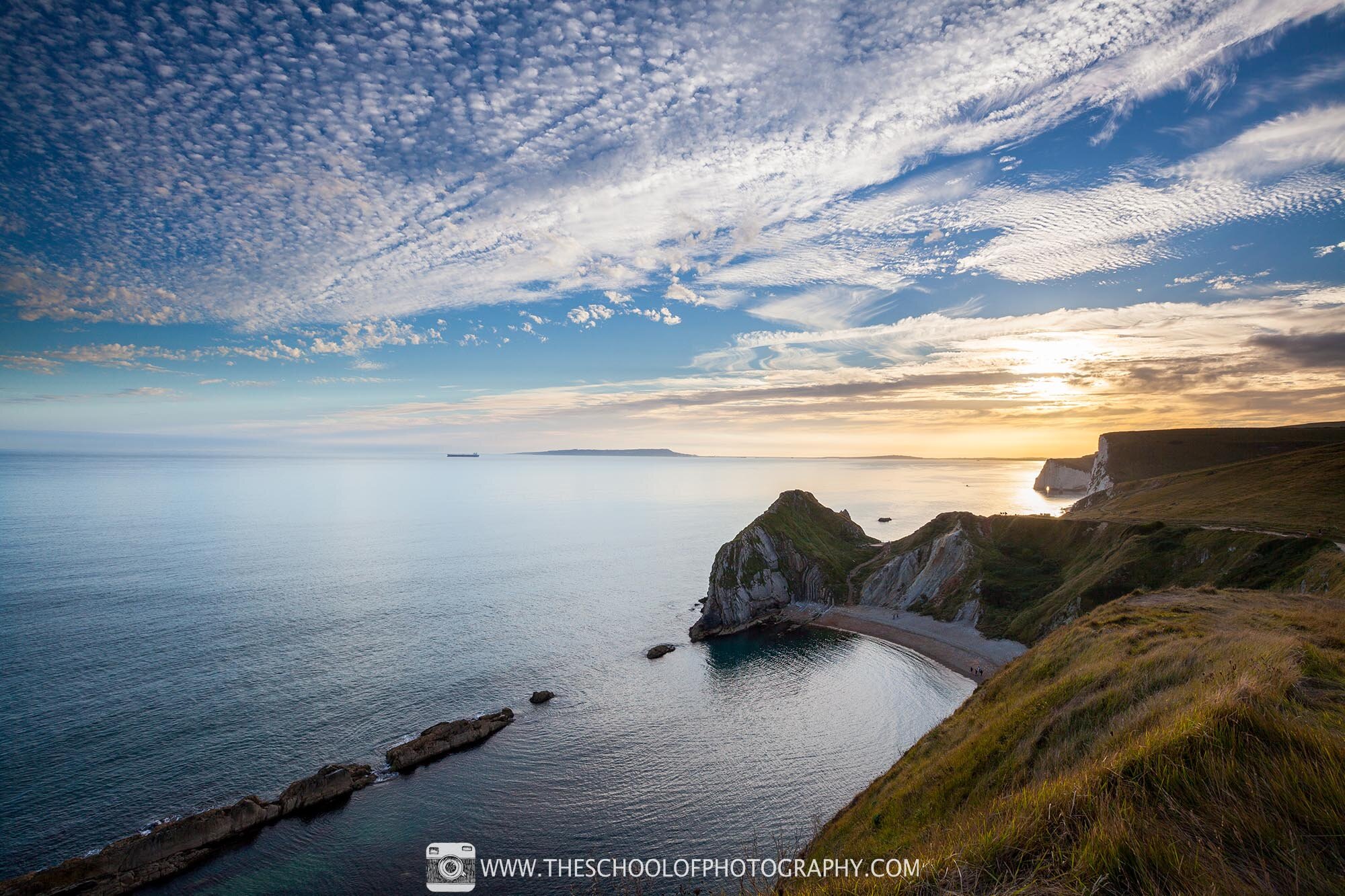
Same exposure using a two stop hard grad filter – This has darkened the heaven and counterbalanced the exposure. / Photographic camera Settings: 17 mm Focal Length - 1/60th Second - f/11 - ISO 100
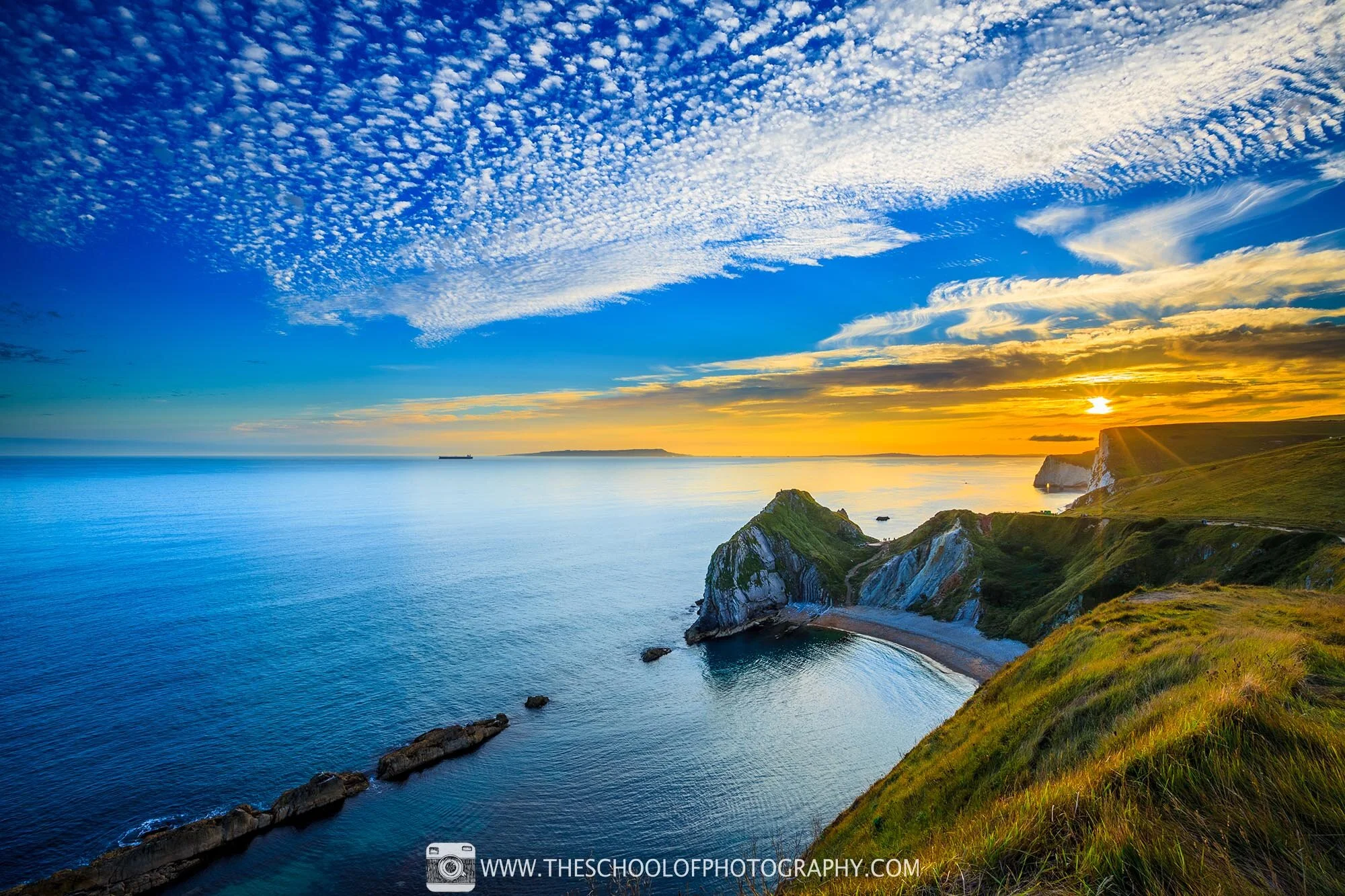
Photo processed in Lightroom
Tip 2- Accept two pictures and merge them together
Blending two images together is really simple to do and works perfectly for dusk photography. All you need to practice is accept one image exposed correctly for the footing and one image correctly exposed for the sky. Then in Photoshop (or other similar programs), you layer them upward with the brilliant sky on top and mask through the brilliant sky to reveal the darker heaven underneath.
How to utilize Layer Masking in Photoshop
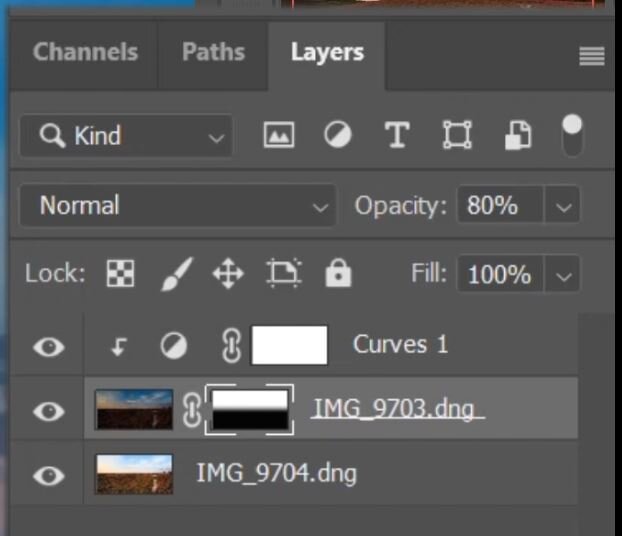
Two dusk pictures merged together using masking in Photoshop
Case of merging sunset photography
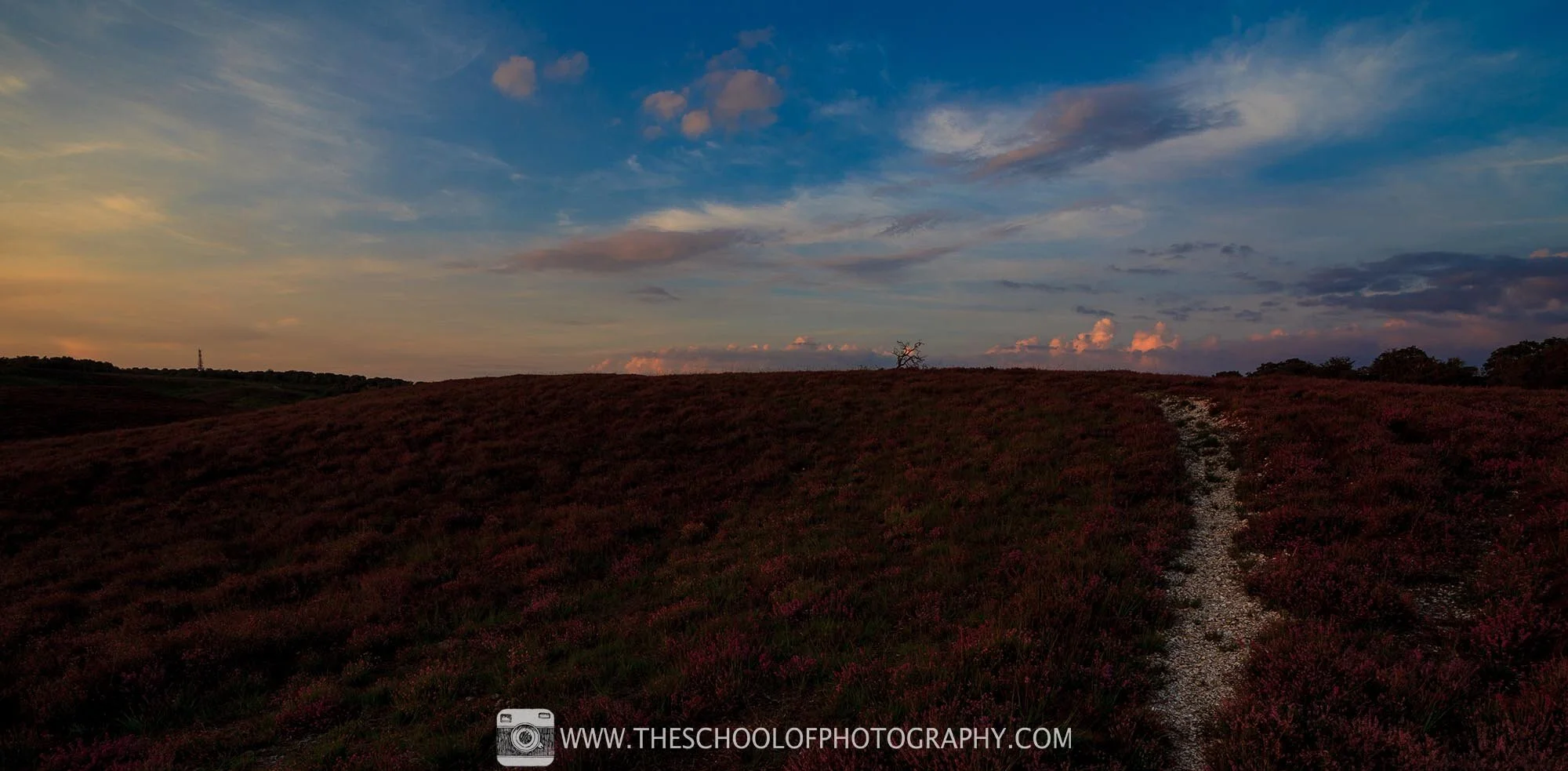
Exposed for the heaven - Camera Settings: 16mm Focal Length - 1/30th Second - f/11 - ISO 100
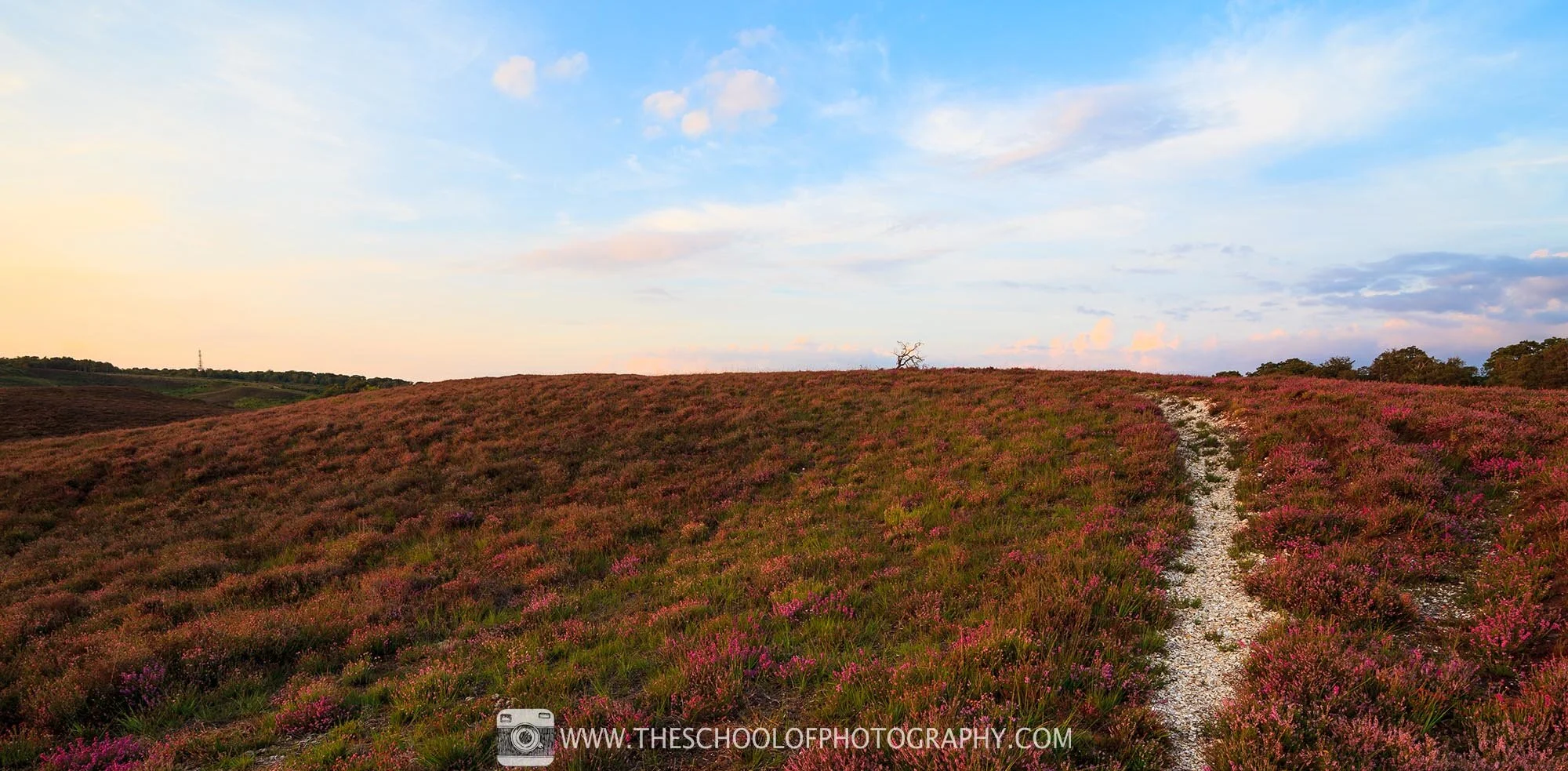
Exposed for the foreground - Camera Settings: 16mm Focal Length - one/10th 2d - f/11 - ISO 100
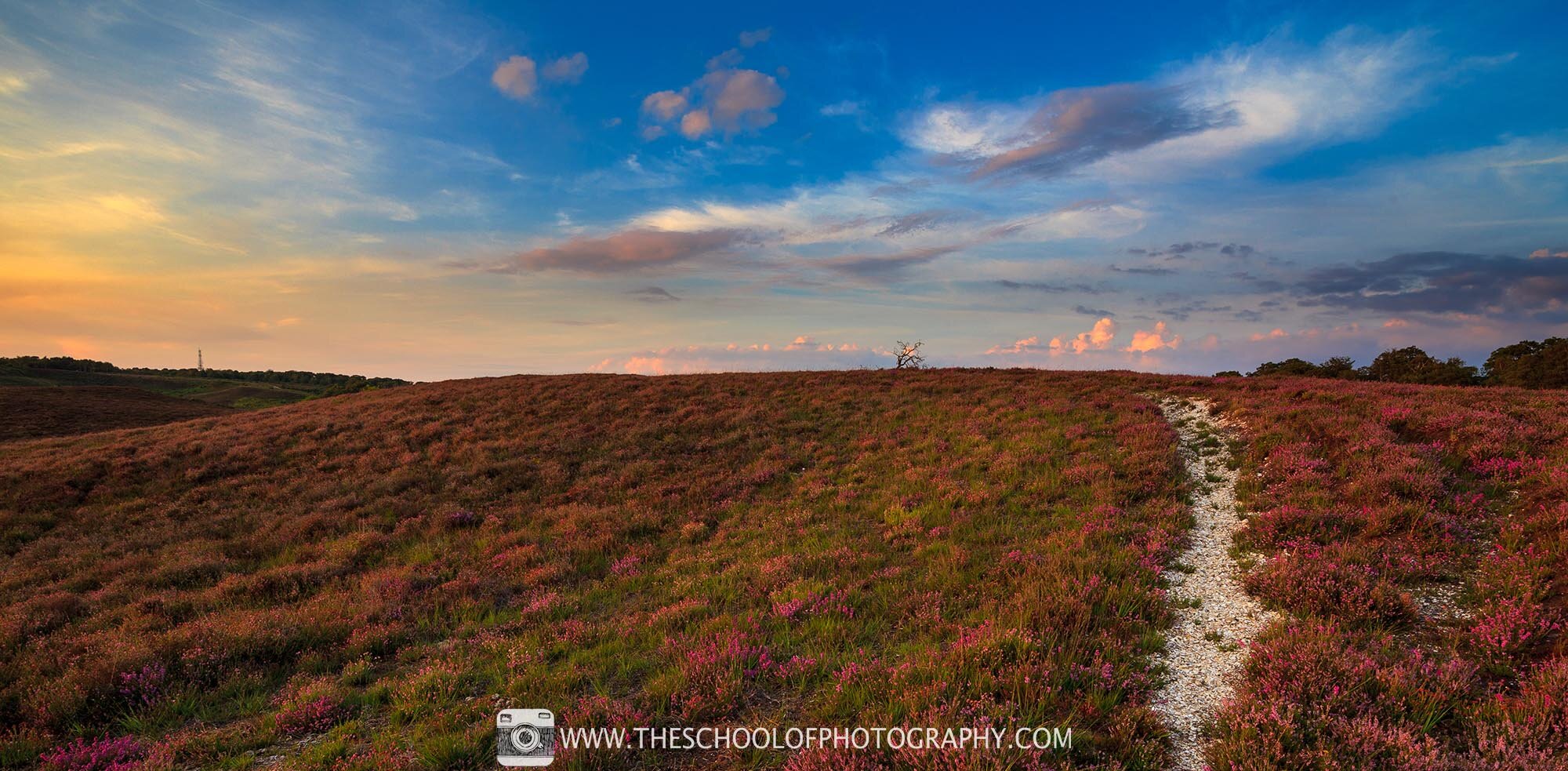
Merged landscape photo - Camera Settings: 16mm Focal Length - 1/tenth 2nd - f/11 - ISO 100
Now I know this isn't the best instance of a sunset photo only it does illustrate the ease of this technique if you know how to employ layer masks in Ps. To learn Photoshop properly, click here
Again, there are cons to doing it this way every bit well. A scene with a lot of item betwixt the sky and the footing i.eastward. copse will take a lot of fourth dimension masking out!
Tip iii – HDR Photography
HDR (High Dynamic Range) is a mode of increasing the tones and colours across an image. It is used to reproduce a greater dynamic range of luminosity and colour than a standard imaging. In other words, it gives yous more range within the highlights and shadows of an paradigm and so that you can easily darken down the heaven or brighten upward the ground.
An HDR image is formed by merging 3 or more images of the same scene together. Each of the images must be taken in exactly the same place but at different exposures, e.chiliad. one underexposed, ane overexposed and i exposed in the heart. By and large, 1 stop of exposure each side of your normal one but can exist up to 2 stops each side. These pictures are then merged together to create an HDR image usually in a program chosen Lightroom.
To acquire how to balance exposures using stops, click here.
Instance of HDR Photography
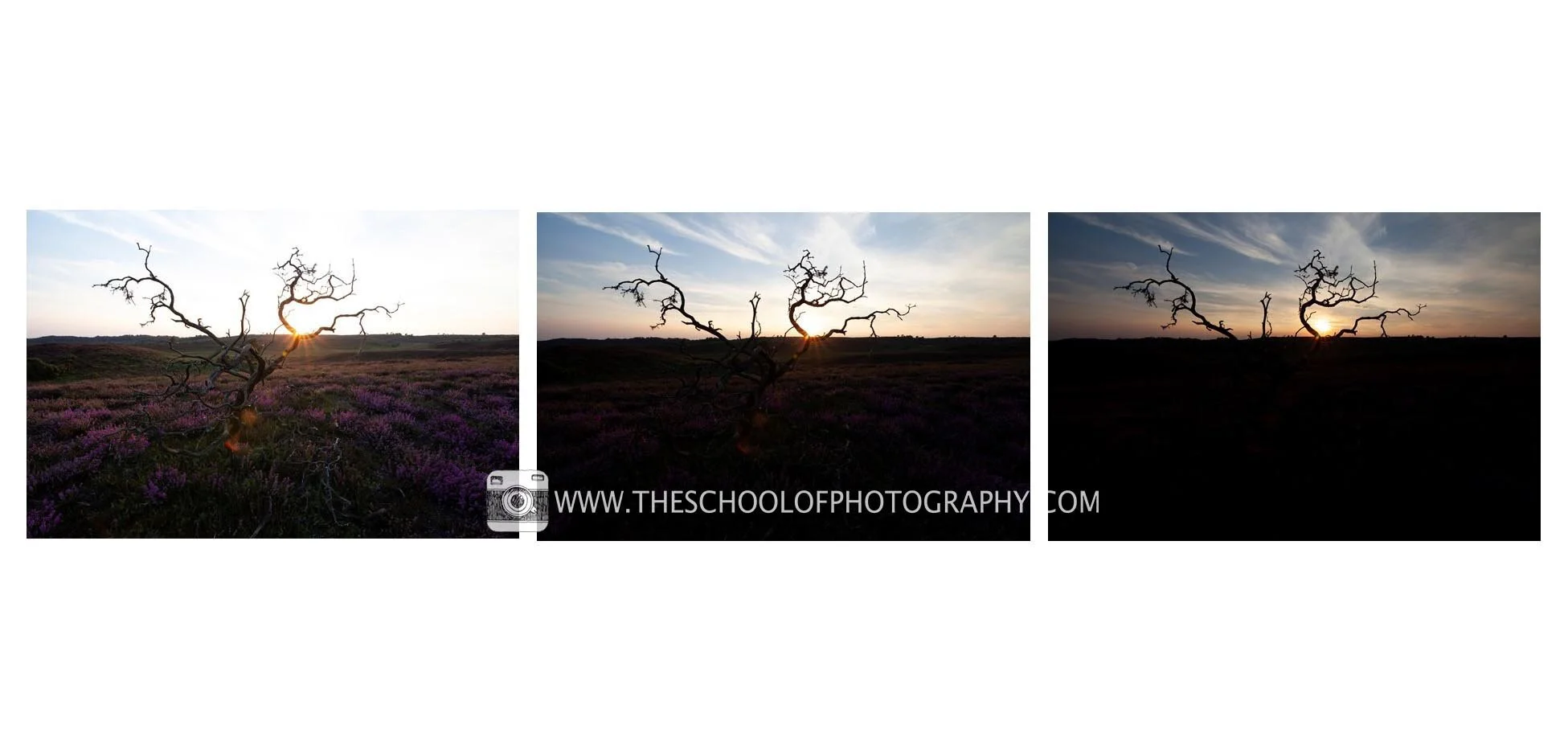
3 bracketed mural photographs
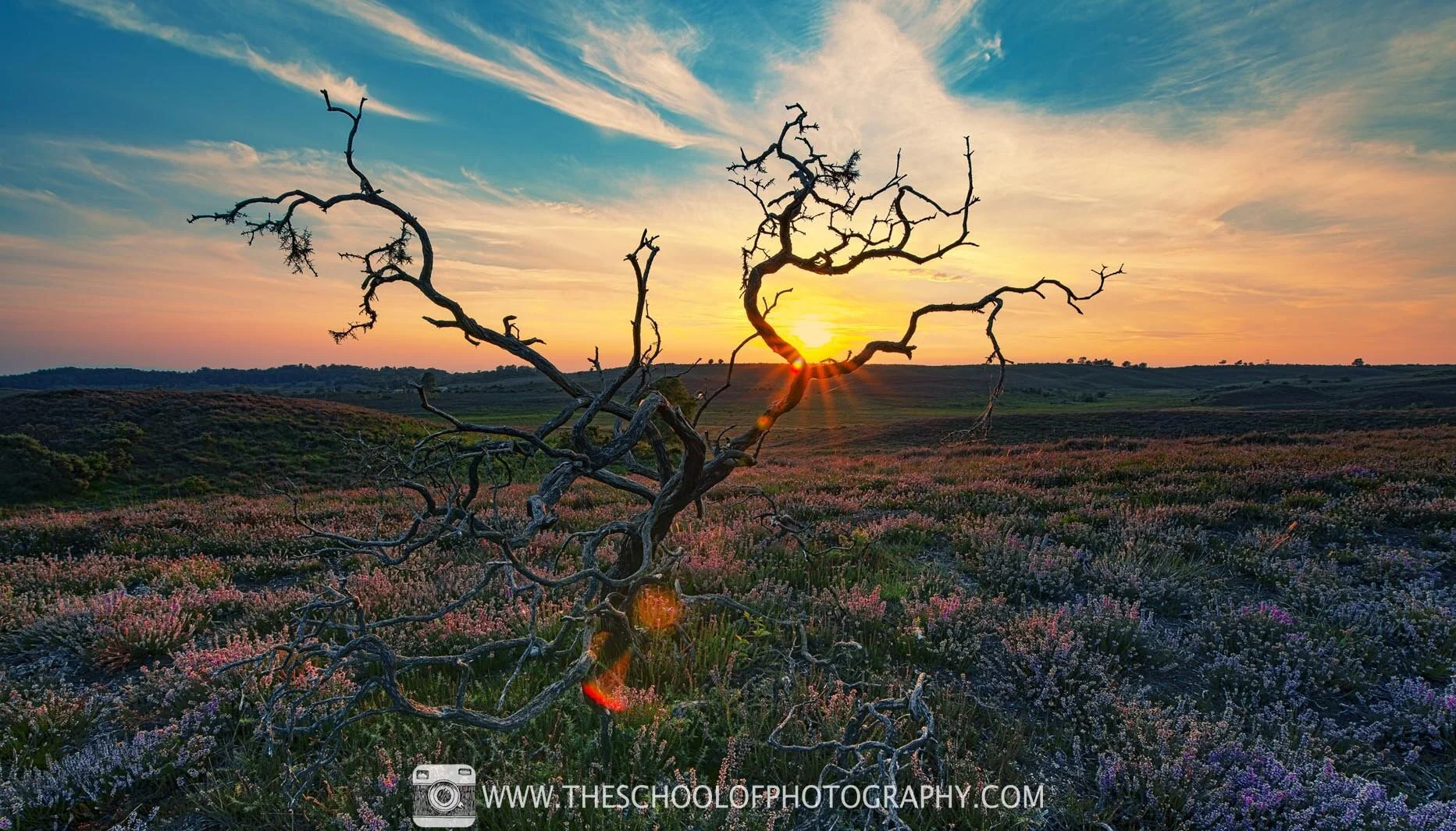
Merged pictures showing an instance of HDR sunset photography
The cons to using this technique is that everything needs to be extremely all the same for information technology to work. So, a windy day photographing a scene with copse in won't piece of work every bit they will movement during each exposure. Also, HDR images can sometimes look over-candy, still, it is upwards to you how much you would like to process your images.
To learn how to create HDR sunsets in Lightroom, click here
Tip 4 – Shoot in Raw
A raw file has the nearly information you can get from a photo, it's the equivalent of the old negative if y'all can remember those! It has much more 'Dynamic Range' than a Jpeg does.
Shooting in raw gives you the opportunity to pull a lot more detail out of the shadows and highlights in post-processing. Another affair to note here is that the bigger the sensor, the larger the dynamic range. For instance, a total-frame camera will take a lot more than Dynamic Range than a crop sensor photographic camera. This is why yous generally see the pro landscape photographers using full-frame cameras.
Camera Sensor Size Comparison – Which one should you use?
Example of processing a Raw sunset photo
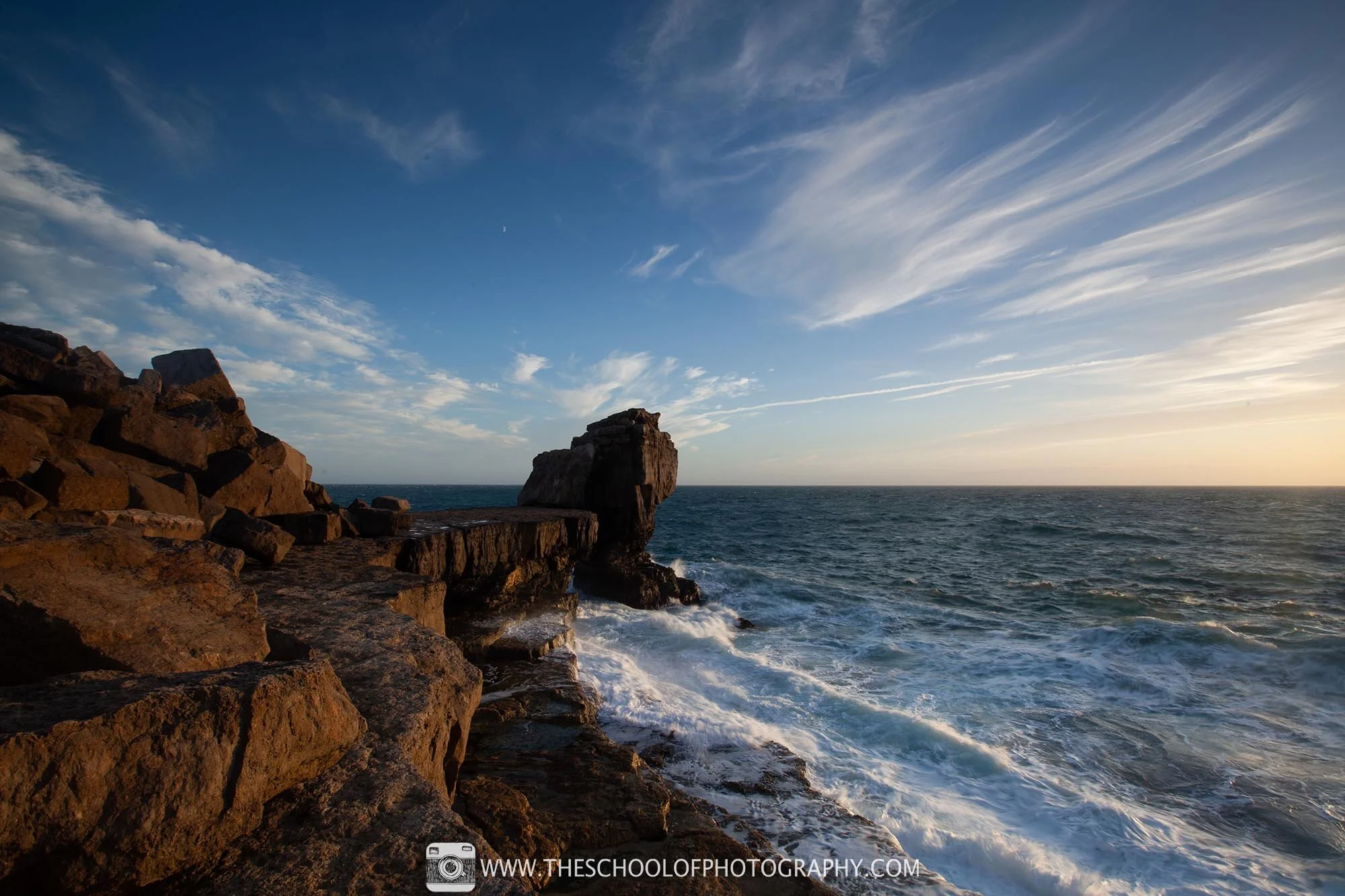
Raw Sunset Photo, directly from photographic camera / Photographic camera Settings: 17 mm Focal Length - 1/50 Seconds - f/xvi - ISO 100
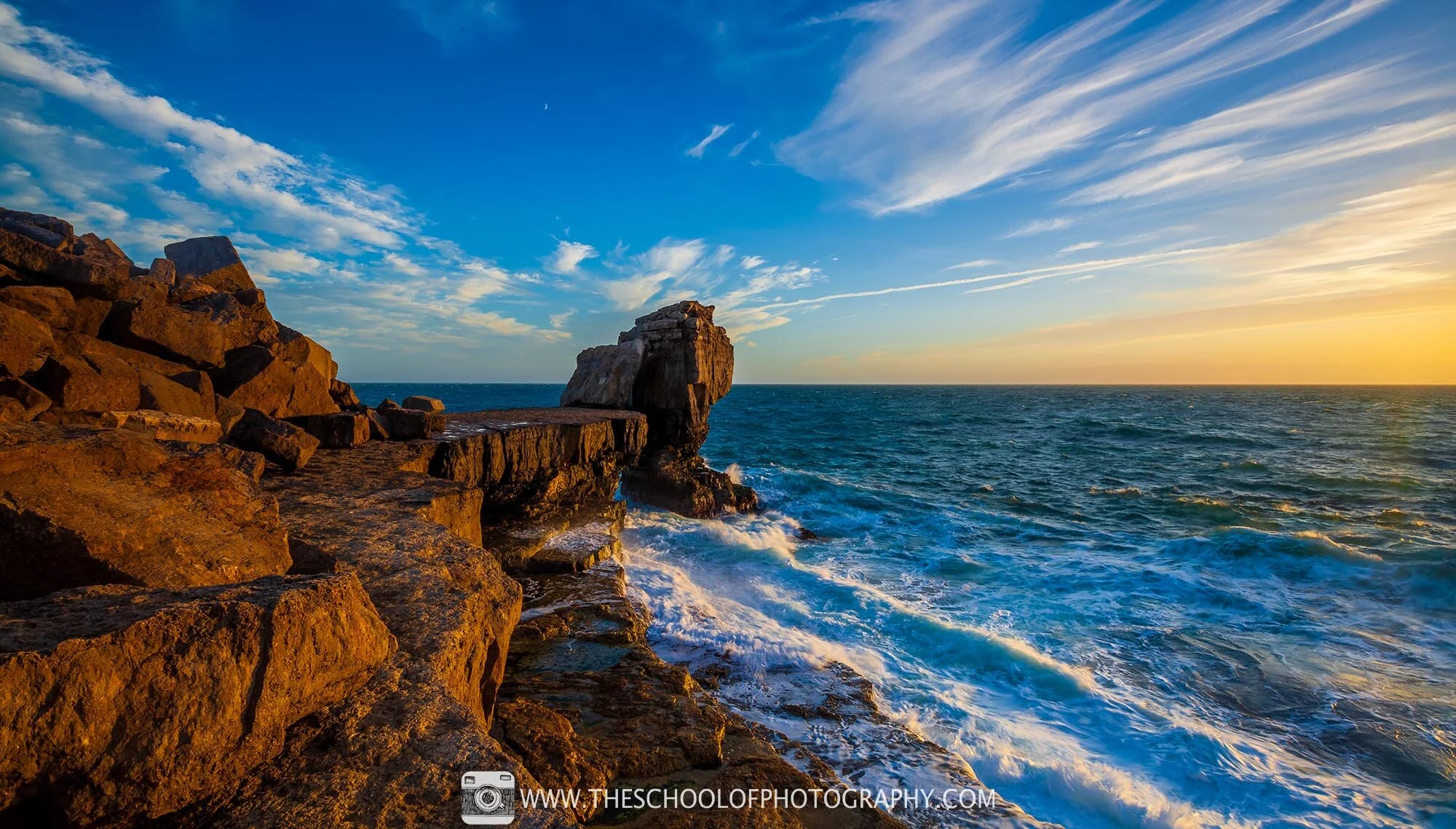
Processed Sunset Photo using Lightroom
Get instant access to all our high-quality online courses.
Like this? - Check out similar tutorials below
Free Photography Tutorials and Pro Tips & Techniques
Gratis Photography Tutorials and Pro Tips & Techniques

I hope y'all liked this dusk photography blog, please leave u.s. a comment and support united states by sharing it with your friends and subscribe to our newsletter at the bottom of this page for more.
We besides have an first-class learning customs on social media and then please join usa there as well.
Thanks for watching and think – Larn more at The School of Photography.
Source: https://www.theschoolofphotography.com/tutorials/sunset-photography
Posted by: bestthame1959.blogspot.com


0 Response to "How To Photograph Sunsets Camera Settings"
Post a Comment